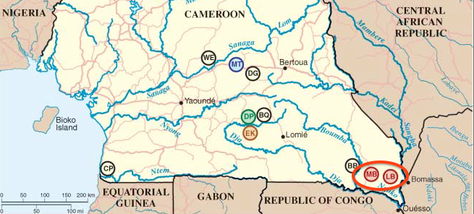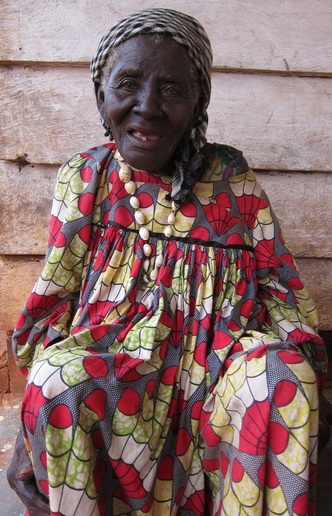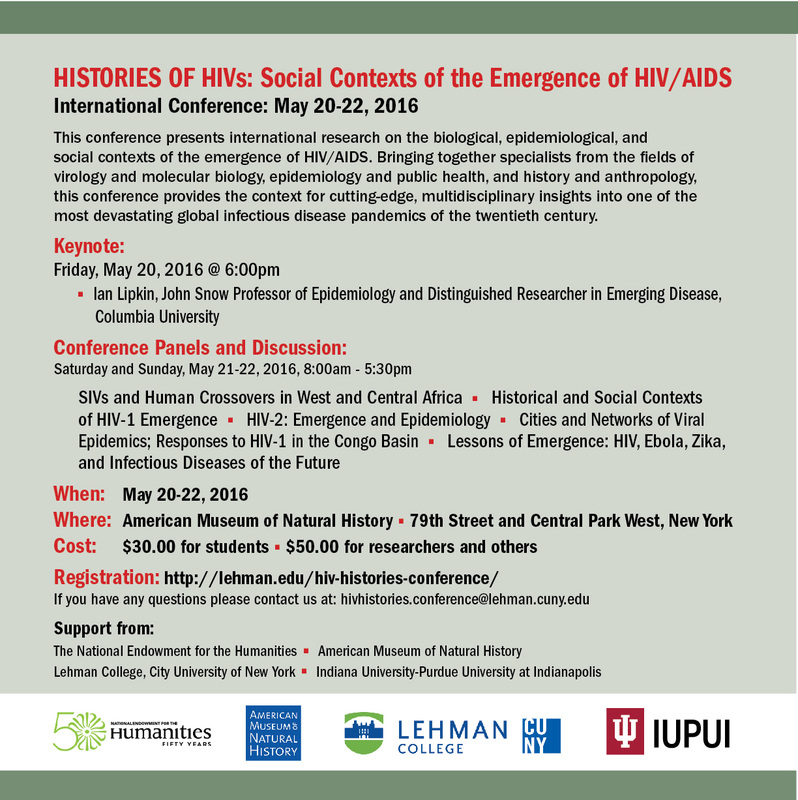|
Social Contexts of the Emergence of HIV/AIDS
My research on human-ape boundaries dovetails with current research by two teams of virologists, which have independently identified the Lobéké Forest region of southeastern Cameroon as the location of the chimpanzee community from which the globally pandemic strain of HIV/AIDS originated during the first half of the twentieth century. While there are two strains of HIV (HIV-1 and HIV-2) and numerous types of each strain, only one type of one strain—HIV-1M, originating in southeastern Cameroon—represents over 95% of all human infections globally (in excess of 30 million infections). Because of my extensive research in precisely this region, in 2011 I joined an international consortium of researchers seeking to analyze the historical, political, and cultural contexts of the first decades of the twentieth century on the rim of the western Congo River basin, the location and time period of the emergence of pandemic HIV/AIDS. We postulate that the human-transmissible virus then spread from southeastern Cameroon along the Congo River and to Kinshasa, the capital of today’s Democratic Republic of Congo, from where the virus made its trans-Atlantic leap to North America. The research team of five historians, one anthropologist (Rupp), one virologist, and one epidemiologist has received a three-year collaborative research grant from the National Endowment for the Humanities to support this research. |
Natural ranges of the four chimpanzee subspecies (top) and locations of wild chimpanzee study sites WE, MT, DG, DP, BQ, EK, CP, BB, MB, and LB in southern Cameroon. Chimpanzee populations with endemic SIVcpzPtt infections most closely related to HIV-1M are MB and LB, in red circle. (Keele et al., 2006)
|
|
Bangando elder living in Moloundou, recounting colonial-era
changes to health and illness among the people of the Lobéké forest region. |
Although the Bangando community is small and localized, this group would have been the predominant forest community in contact with colonial officials, markets, and medical posts in southeastern Cameroon, the region where HIV emerged, during a window of time estimated by virologists' molecular clocks as the first half of the twentieth century. Through ethnographic interviews with Bangando and Baka elders, I am identifying local changes in the forest environment of southeastern Cameroon—ecological, economic, political, and social shifts in response to burgeoning colonial interest in items such as rubber and ivory as well as meat, skins, and animals—that may have led to new patterns of engagement with primates. My research examines changes in hunting, butchering, and marketing of forest products, especially animals. I am also evaluating ethnographic accounts of medical interventions such as vaccination campaigns, the introduction of surgeries and transfusions, and other colonial medical processes that could have introduced iatrogenic methods of disease spread. Finally, this research addresses political-economic changes, such as the introduction of currency, taxation regimes, labor markets, migration to towns along the Congo River and its tributaries, as well as the arrival of Europeans and Africans from other regions into southeastern Cameroon. Such factors affected social dynamics within villages and families in the Lobéké forest region, and thereby may have affected and been affected by the emergence of HIV-1M.
|
Histories of HIVs: Social Contexts of the Emergence of HIV/AIDS
International Conference
American Museum of Natural History
20-22 May 2016
International Conference
American Museum of Natural History
20-22 May 2016
| hiv-histories_program-booklet_complete_20160512.pdf | |
| File Size: | 3076 kb |
| File Type: | |


